We've already visited Amsterdam twice (3/16/23 and 12/13/23) but evidently Amsterdam is quite close to 'Tulip Country,' and the boss specifically wanted to go see the tulips (since we're so close, in the whole scheme of things). Also, for our third trip to Amsterdam, we didn't actually go to Amsterdam - which sounds odd, especially on 4/20. The closest we got to Amsterdam "proper" were a couple of times we found different restaurants and shops, but we didn't actually go downtown a single time!
We left Frankfurt after the boss got off of work on Thursday afternoon. We'd initially planned on driving all the way on Friday, but we (she, actually) decided that we'd drive about halfway on Thursday evening to cut down the drive time on Friday and give us more time for sightseeing. We stayed in a cheap hotel about 50 miles from the border, then headed out after breakfast the next morning.
We rolled into the area early Friday afternoon, our first stop was a place called "The Tulip Barn." Parking was quite organized, leading me to believe that every place we went would be just as organized.
Spoiler alert: The other places weren't.
We parked next to a massive field covered with all different colors and types of tulips. They were all inside a fenced area though. You had to pay €10 to enter the field, and I figured that I'd see plenty more flowers before the weekend was over, so I didn't bother going in. Instead, I went into the barn itself and perused the shop, and then I tried something new: I had my first Aperol Spritz. I also learned something new: I don't particularly care for Aperol Spritzes.
Afterward, the boss wanted to have dinner at a place where she could watch the sunset in a picturesque setting, either a tulip field, or the beach. The beach was an easier place to find a restaurant, so we headed toward the water, and found a little town called Zandvoort. Most of the beaches in the Netherlands (that we've seen in the past) have a wide boardwalk area, with restaurants on the sand after you've passed the boardwalk. We stopped at one of them, and took seats on a couch in one of the seating areas - the closer seats to the water were all taken. After a little while, one of the groups that had been seated against the edge (overlooking the water) left, and we moved over to their seats. We might have taken up their table for too long, but they didn't complain - we each had a couple of drinks, and both of us ordered food. We stayed there until after we were able to capture some good shots of the sunset, then headed to our hotel.
Our adopted tour group then moved back over into the store area, so we spent some more time in there, then I headed outside. The wife poked her head into the clog making area to try to get some pics without a whole tour group jammed in there, and ended up getting a demonstration with only two other visitors. She took that opportunity to talk to the guy making the clogs and got a recommendation of a place to eat that wouldn't be so touristy.
She eventually came out and gave me the address (of the restaurant she'd heard about) where she wanted to go next. I plugged it into my phone, and promptly got turned around and hopelessly lost. Turns out, this restaurant is in the Amsterdam City Forest, and it's usually best accessed via a ferry across one of the canals, so that's where the GPS took us. The GPS didn't take into account that the ferry didn't appear to be running that day. I checked out the map and found a parking area within the forest, but got turned around in traffic and didn't feel like dealing with it that day. Instead, we found a pancake shop outside a nearby mall, and had perfectly serviceable pancakes. Nothing special, nothing wrong with them - they were just okay.
We didn't have anything booked until 7:00 that night (hold your horses, we'll get to it soon enough!), so we took off exploring. The family travel advisor had heard of two towns away from the main tulip fields that sounded promising, so we headed up in that direction. On the way up there, we made a slight detour:
Starting in 2001 in Dubai, they constructed several gigantic island complexes, the Palm Islands. They hoped to create new beach areas to allow for higher numbers of tourists, and wanted to create additional beachfront land for higher priced residential and commercial plots. They used only natural materials to build these islands:
- 13 million tons of rock
- 143 million tons of sand
- 700 tons of limestone
In preparation for our evening activity, we drove by where we needed to end up, then started looking for food nearby. Right around the corner was a BBQ place, so we headed over there. Upon our arrival, it turns out that it wasn't a real restaurant, they only offered delivery and take-out. We placed our order for take out, and ate in the car waiting for our 7:00 appointment.
I've circled around it for (almost) long enough, time to let you in on one of the coolest things that we did. A little backstory, to set the scene though...
When we were over here (in Europe) from 2010 to 2013, I encountered a tiny commuter car (by chance) that I thought looked like a lot of fun. There are a few different manufacturers who make electric micro cars nowadays, but I'm always unreasonably excited to encounter one of these specific cars in the wild. The boss had happened upon a link to a site (while planning this trip) where we could rent a Renault Twizy, the same kind of car I had encountered during our first trip. While traffic was pretty thick around all of the tulip fields, the size of the Twizy would let us zip around, and the company that rents them had a GPS guided tour mapped out which took us on back roads and by fields that weren't mobbed by tourists. I'll post some pictures below, but let me try to describe the little car before I share the pics.
I've mentioned before that this thing is small, but I don't think I'm getting across just how tiny it actually is. It's basically two seats - one in front of the other - with a cage built around them. There are front and back windshields, but no side windows. There are "doors" on the sides, but they're mainly there just to make sure you don't fall out - they're really just half height panels that rotate up like the doors on a Lamborghini. The passenger in the back can't get in until you slide the front seat forward, then once they shoehorn themselves into it, the driver slides the front seat back, and folds themselves in half to maneuver into the driver's seat.
I apologize if this is sounding like a modern day torture device; while each of the seats were a little tight, this was one of the most fun little cars I've ever driven. I can't imagine driving it on a daily basis (especially in inclement weather), but I can't think of a better car to explore the tiny back roads of tulip country. If you ever want to try driving one, I'd recommend packing light; anything other than a pack of gum in your pockets, and you might not fit. Also, have a plan for cold and rainy days.
The wife took a turn driving, but I missed capturing any photos to document the occasion. Guess we'll have to go back!
We puttered around tulip country for a little more than an hour, and hadn't made any significant stops. We'd stopped at a couple of fields, but had kept going, looking for the "perfect" field. We got to a turn where I could see on the GPS that our route would come back to that same turn, so I surmised that we would be doing a loop, and assumed that we were approaching the end of the route.
Luckily, we encountered a place (on our little loop) called The Tulip Store and Showcase, and it looked promising. The botanist in the back seat wanted to get sunset pictures with tulips in them, and the layout of this place seemed like we'd be able to get some good ones, with a wide variety of types and colors of tulips. Turns out, they were closed, but there were no fences keeping tourists out of the fields, so we stopped and spent the remainder of our time in their fields. They had quite a few different showcase areas (about 4 feet square), showing different types and colors of tulips, with posted signs so that you could order bulbs of those kinds of flowers - probably a hundred (or more) different varieties. Additionally, they had the long fields behind the barn.
We got some pretty impressive pictures of the sunset, then absently checked the time - we had about 15 minutes to get the go-cart back to its home, and no idea how much further our route would take to drive.
Driving around previously, I had been poking along at around 30 kilometers per hour (a little less than 20 freedom units per hour), while the speed limits on most of the back roads was actually 60 kph (about 35 mph). Looking at the map now, from that store to return the Twizy was only about 8 miles, but I wasn't bashful about going the speed limit to get back. You'd be surprised how fast 35 mph feels when you're in a Matchbox Car.
We returned the Twizy at exactly 9:00, and drove the real car back to the hotel, at normal highway speeds.
Easter Sunday we got up and (after checking their hours) headed to the pancake restaurant that we'd been unable to get to the day before. I'd taken the time to research a couple of parking lots (in addition to the one I'd seen the previous day), and set the GPS to take us there. That early in the morning, on Easter Sunday, we had no issue with traffic, and were able to find a parking spot. The lot turned out to be about a quarter mile away from the restaurant, on a pleasant path through the woods.
The restaurant turned out to be a really good choice. It was almost a cafeteria style, where you take your tray through and pick out the things you want and pay for them at the end. You get whatever drinks and pastries you want, and when you're paying, you tell the cashier what kind of pancakes you want. You take that receipt to a window leading to the kitchen, and they give you a pager which buzzes to let you know that your pancakes are ready.
It was cool and quite pleasant outside (if a little windy), so we found a place in the shade and I claimed the table while the family photographer explored and documented. Dutch pancakes are a little different than American pancakes; almost like thick crepes, with different toppings on them. The wife had apples and cinnamon on hers, mine had lemon juice and powdered sugar on them.
As a quick aside, when I visited my grandparents in Fort Worth while I was growing up, my grandparents (later, just my grandmother) would take me to a place called Ol' South Pancake House, and we would get "German Pancakes." Basically, a thick crepe, covered with a heavy sprinkling of powdered sugar, melted butter, and two or three lemon halves. The waitress would squeeze the lemons (at the table) onto the pancake and pick the seeds out with a fork, then would fold it up and flip the whole pancake over for presentation. Some of my fondest memories of my grandparents are spending time with them at Ol' South.
I'd be lying (by omission) if I didn't mention that I did get choked up a little while enjoying my (I'll call it) "German Pancake." It's funny how tastes and smells can bring your memories to the forefront.
Suffice it to say, I'll be going back to this pancake restaurant any other times we find ourselves in Amsterdam.
There's a lake in the forest (because it's Amsterdam - of course there is!), and there was some sort of rowing competition that day. The wife got some decent pictures of it.
While riding on the shuttle bus from the parking area to the site itself, the driver shared bits of history with us, pointing out how some of the buildings in the actual town itself have continued sinking into the marsh over the years, pointing out one in particular where the front door was over a foot below the surrounding ground level. He told us that new construction was required to be built on pilings, but that retrofitting the older buildings was quite expensive, so all of them hadn't been fixed yet.
The site itself is a complex of 19 windmills and two or three additional museums. Also, two of the windmills are open for you to tour. The windmills are all in lines on both sides of the main canal. One of the windmills you can tour is at the midpoint of the line, and the other is at the far end from the entrance. Additionally, there are 2 boat tours you can take. One of them simply cruises from the beginning of the area all the way to the end, then turns around and returns to the start. The other goes from the beginning of the area, and stops at each of the tour windmills in turn before returning back to the start. We took a ride on the one that just did a big circuit (without stopping at either of the museum windmills), then we walked back up to the first museum windmill. The wife toured the museum while I slowly wandered back to the start, where I patiently waited for her over a Heineken.
We stimulated the local economy a bit, then headed back to the car to find a place to eat. I looked for another place on the beach, and found a nearby town with restaurants... but... you remember how I talked about the layout of most beach towns over here? Turns out, I'd picked one that wasn't laid out like that this time. We parked in a public parking area and walked on a half paved, half sand walkway over the dunes - to find a single restaurant. Turns out that in this beach town, each restaurant has its own parking area and walkway, with no other restaurants within sight. Instead of having our pick of a handful of restaurants (without moving the car), we were kind of stuck at this restaurant (since we couldn't even see any other restaurants nearby). We decided to go ahead and eat there, despite some less than stellar reviews on Trip Advisor.
The food was actually pretty good; I think the reason for the bad reviews was probably because of the service. Our food took quite a while to come out - long enough that we were concerned that our order had been lost. Our waiter mentioned offhandedly a few times (over the course of about a half hour) that our food would be out shortly, in about five minutes, in about ten minutes... while we were waiting, I had a couple of "whiskey sours," and the wife had a glass of white wine, then switched over to beer. The reason I put "whiskey sour" in quotes... these were unlike any other whiskey sours I've had before. I'm not sure what recipe the bartender was following, because my drink was tan (rather than pale yellow), and my drink was served in a wine glass rather than a rocks glass. I'm pretty sure it had some sort of whiskey in it, and there was some sort of sour mix (or lemon juice, etc.) somewhere in there as well, but there were some additional ingredients in there that I'm not familiar with. It wasn't "bad," it just wasn't like any other whiskey sour that I've ever had before. Don't get me wrong, it wasn't horrible - I even ordered a second one - but honestly, it was more out of curiosity than anything else. I wanted a second drink of some kind to go with my meal after waiting for so long, and it didn't taste offensive, just different.
We headed back to the hotel afterwards. I'd seen signs around the hotel talking about an Easter Egg Hunt, with eggs hidden in random places around the hotel. Since it was after 9 on Easter, I asked the gentleman working the desk if there were any eggs still hidden. Once he told me that there were "quite a few" (his words, not mine) that hadn't been found, I called up to the room and told the wife about them. She came down to help look (because she likes this kind of thing). We ended up finding 4 eggs, but right there on the sign, it said "One egg per room." We agonized about which egg to turn in, but the same guy who told me about the number of eggs remaining told us that it'd be okay if we each brought him one. The wife got a €10 euro credit to the 'Grab & Go,' and I got a voucher for a free breakfast. I walked around the lobby and told three other people exactly where the remaining two eggs were, but no one was interested in turning them in - perhaps I didn't explain the concept well enough. Lucky thing, too - because when I went back up to the bar to tell the wife about it, the gentleman behind the bar had told her to go ahead and bring the other two eggs up, despite the flyers around the hotel limiting it to one egg per room.
He went into the office to retrieve the other prizes, and came back a few moments later with bad news from his manager. Since the wife had already used a portion of her 'Grab & Go' voucher, we were stuck using that one. He gave me my choice of the three remaining prizes: the breakfast voucher, a free bottle of wine, and another voucher that I can't remember right now. We ended up sticking with the free breakfast, since we'd just have to bring the bottle of wine back home with us.
We both decided to have breakfast downstairs the next morning, I went down first, and lazy-bones came down a little while later. I used the voucher when I checked in. When the wife checked in, the clerk told her that the voucher I'd used covered both of our breakfasts.
Seems like this particular hotel occasionally plays a little fast and loose with their adherence to these sort of rules. Nice to know, for future visits.
After we checked out of the hotel, we went back to the Tulip Experience (that we hadn't been able to get into on Saturday afternoon), as we'd purchased tickets online for right after they opened on Monday morning. In a big warehouse (which is used for tulip bulb processing at other times of the year), they have a path laid out for you to learn all about tulips. You may have noticed that I've written very little about tulips themselves in this blog, and that was by design. While there's quite a bit of information about tulips available (and per my usual blog writing process - I learned ALL about, despite my miniscule level of interest in them), in this one instance, I don't think it's necessary to sprinkle all of the information I've learned throughout the blog. I'll put all of it in a big blob at the end of this entry (in a pretty red font color), so you can read it or ignore it, as you prefer.
As I mentioned, the Tulip Experience went into the history of tulips and the process that the bulbs go through when they're processed. After you've walked through their displays, there's a door to go outside, where you can wander around their massive fields. Once you come back in, there's a little cafe area, a shopping area where you can pick up tulip related souvenirs, and then an area where every person who buys a ticket gets to select 5 sprouted bulbs to take home with them.
After we left there, we went back to the Tulip Store & Showcase that we'd stopped at in our Twizy (that was closed, but where we took our tulip sunset pictures) to see what else they had. We paid the €5 entry fee to find.... that there was nothing else. No shopping area inside, nothing. We literally paid money to do something for the second time that we'd done for free two days prior. As weird as it sounds though, neither of us felt bad about it, since we'd 'used and abused' their tulip fields Saturday evening. We took a few more pictures, then left.
One last thing the horticulturalist in the passenger seat wanted to do was to pick some tulips of her own. She had come up with some cockamamie idea to dry her own tulips to complement her dried bluebonnets, so we set our GPS to a place that mentioned letting you pick your own flowers. On the way there, I saw a road parallel to the highway with booths and gardens on it, so we detoured there, and discovered a pick-your-own farm. She selected 25 tulips for €10, and bundled them up for the journey home.
We drove back home from there. Seems like a bit of an anticlimactic ending, but... she picked some flowers, then we drove for 5 hours to get home. Sorry I can't make that more wordy!
And now, without further ado... here's a random selection of information that I was able to gather about tulips.
Tulips are grown (mostly) in the region between The Hague and Amsterdam, smack dab in the middle. The Hague is located on the shore of the North Sea, while Amsterdam is about 35 miles to the northeast, about 5 miles in from the coast of the North Sea (but connected to the sea by a canal, Noordzeekanal).
Just a couple of miles in from the coast, right between those two cities, is a region of the Netherlands oddly suited to growing tulips. Oddly enough, tulips aren't native to the Netherlands, as we learned while we were there. As is typical of these blog posts, if I had to learn all of this, so do you.
Tulips originally came from an area between Türkiye and Iran, with the earliest written record of them dating back to the 10th century. Indeed, the tulip is still the national flower of Türkiye, and is still considered one of their national symbols. Additionally, there are many references to tulips in Iranian culture, such as in this poem from Persian poet Musharrifu'd-din Saadi in 1258:
"The murmur of a cool stream / bird song, ripe fruit in plenty / bright multicoloured tulips and fragrant roses..."
There's no universally accepted story about how tulips originally got introduced to western Europe, but the best known of the stories tells of an Ambassador for Ferdinand I to Suleiman the Magnificent (Sultan of the Ottoman Empire from 1520 to 1566). He supposedly brought word of the flowers to northern Europe, and interest in tulips spread quite quickly - quickly enough that between 1634 and 1637, prices for bulbs shot up so far - and so quickly - that the Dutch tulip market is widely considered to be the first speculative market bubble in history. In 1637, the price of a single tulip bulb got as high as 10 times the annual income of a skilled artisan at that time.
That tulips grow in the Netherlands at all is a happy coincidence. Amsterdam and Haarlem were built on marshy ground, and the land under the cities needed almost constant reinforcement. Luckily, there existed vast swaths of land just a few miles from the nearby beaches, where almost unlimited amounts of earth could be extracted and trucked to the cities. But what to do with the land that remained?
Turns out, tulips grew quite well in the sandy soil that remained, and the rest is history.
What about the life-cycle of tulips though, and the procedures required to grow and sell tulips? Here's where we have to get into the weeds. Tulips go through a cycle, and you have to start telling the story of the cycle somewhere, so I'll start with us traveling to Amsterdam to see the blooms.
Tulips only bloom for a short amount of time - typically a couple of weeks in April and May. At that time, the plant is putting all of its energy into growing the flower itself. Once the flower is fully grown, the farmer cuts all of the blooms off, which then causes the plant to send energy into expanding the bulb instead.
The bulb continues growing underground until late summer, at which point the bulbs are all harvested. Through manual and automatic sorting, the bulbs are categorized by size. Larger bulbs are sold, while smaller bulbs are replanted for the next season's crops.
Tulip farmers spend years developing different types and colors of tulips, selectively pollinating different varieties together in hopes of breeding a unique tulip. For instance, there are several different shapes of petals, and several different colors, and several different stem lengths. They might pollinate a tulip with the desired petal shape with pollen from a different variety of tulip that has a color they'd like to introduce. Over a few years, they very well might get the desired shape and color of flower - or they might get the exact opposite. Over the seasons, they eventually get to a point where the flowers have the traits that they're looking for (for this specific plant) - this can take up to 20 years of selectively pollinating for specific traits. They get to name their variety of tulip whatever they'd like, as long as the name isn't already taken. That's right, there's a registry of tulip names. Tulips can be named after just about anything, including people, companies, popular bands, shapes, emotions, pretty much anything. There are also companies which will breed tulips specifically for you to name, so that your business or organization can have its own type of flower.
I've made an arbitrary decision to stop writing about tulips now. The way my wife got me interested in going to see them was by letting me drive a Twizy after more than 10 years of being fascinated by them. If you want me to do any more research about tulips for you, you'll have to pony up some sort of reward for me!
Until next time....





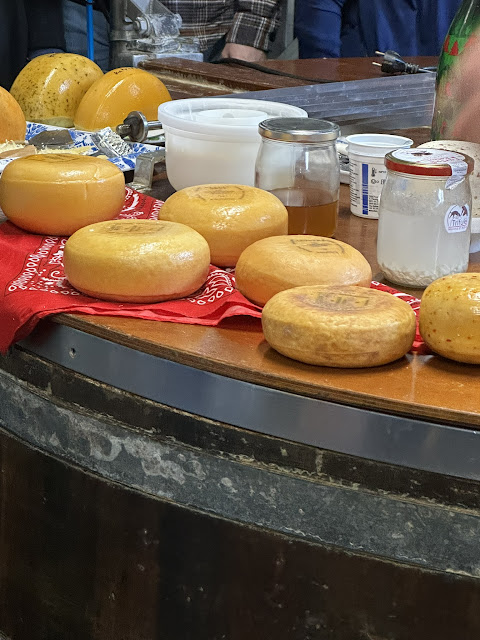

















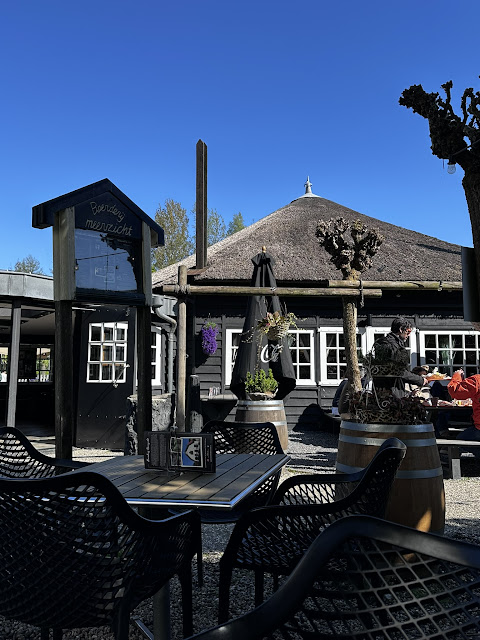






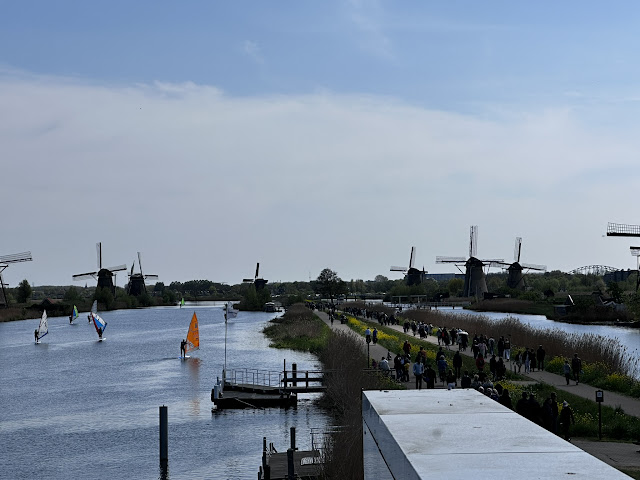







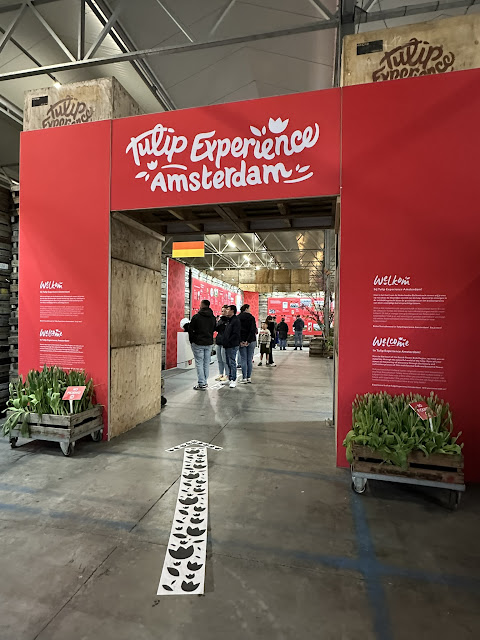














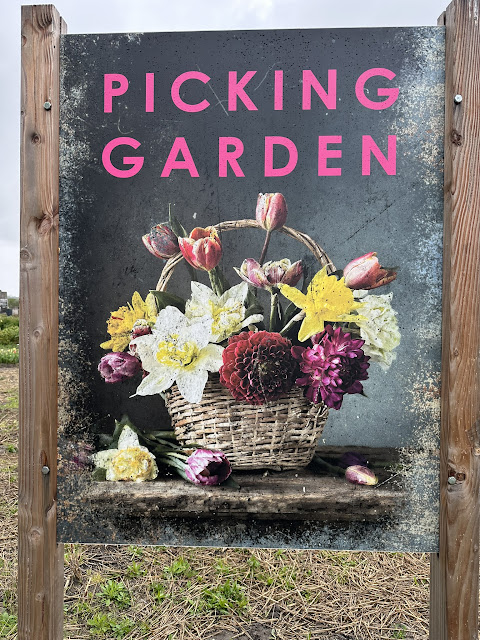




.jpeg)
No comments:
Post a Comment